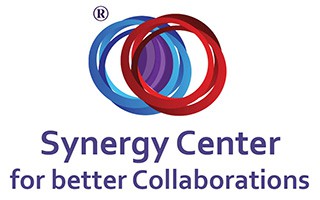Synergy forms when boundary and communication conditions favor diversity. This is because boundaries and communication affect the quality of interactions between diverse parties. If two organizations merge, or one acquires another, it’s necessary to consider the aspects of synergy such as human, technology, law, economy, procedure, structure, and strategy. There’s an interrelationship between these seven aspects, and you can’t ignore one if you’re serious about creating synergy in your organization.
Most mergers or acquisitions fail, because the senior management fails to take one or more of these aspects into account when intending to form synergy. As the saying goes, “A chain’s as strong as its weakest link”, for mergers or acquisitions to be successful, you must consider the strength of each organization.
Synergistic approach prevents avoidable circumstances such as feelings of invasion and “disconnectedness”, which are usually common during and after a merger or an acquisition. These feelings can destroy organization’s “health”. An “ill” organization doesn’t function effectively and efficiently; hence, it can be difficult to maximize profit and increase productivity.
Let’s learn about the important pointers for organizational integration.
The Seven Forms of Interactions Exist at the Same Time in any Given Instance in an Organization
All of forms of interactions exist simultaneously in an organization – but you’re mostly likely to experience interdependence. This is because of the dynamic nature of organizations — changes are fast-paced and frequent, and diversity is present. This is the reason why one form can’t exist without the other (s) all the time.
In other words, quality, neutral and destructive forms coexist in an organization, but their degree of appearance varies. The dominance of some forms may blind you from seeing the occurrence of others. This could be the reason why employees or managers can’t agree on the degree to which various forms appear – it’s subjective; hence, highly debatable or controversial.
The reason why most mergers or acquisitions fail is because they occur violently and suddenly. Employees and managers can learn by surprise that their organization is being taken over, merging, or being acquired by another organization. When people perceive something as a threat, fear occurs, and with it, people make boundaries more rigid. The employees would also feel “disconnected” from their organization and “invaded” by the acquiring organization.
A revolt’s likely to occur if they find it difficult to adapt to new changes. In addition, employees can feel uncertain about their future – new units, systems or work processes could mean loss of job, demotion or transfer. Synergy formation’s difficult in an “ill” organization, but it can occur to some limited degree, despite a forceful leadership.
Depending on how a merger or acquisition is performed, “halo” effect tends to manifest when you discuss issues, which relate to synergy formation, with managers or employees. People tend to discuss what disturbs them, ignoring other issues. Giving importance to a dominant issue and ignoring other issues is a manifestation of “halo” effect.
This effect is also evident in a case where Dr. Rami Ben-Yshai worked as a consultant to create synergy between two diverse groups of the same organization – Hadassah Women’s Organization. One group was local while the other was American-based.
For conventional purposes, Ben-Yshai assigned either group red or blue to differentiate them. He assigned a new reality (synergy) purple. The intention wasn’t to create a “purple” organization. However, because the color had become synonymous with the organization and the language of synergy, employees became obsessed with it. This statement by a board reflects halo effect: “Look, Hadassah’s becoming a purple organization.”
All-in-all…
The senior management should adopt a more humane, democratic and open approach to mergers and acquisitions. It’s important to disclose to employees and managers in advance about an upcoming merger or acquisition so that they’re psychologically prepared. This would help to reduce the likelihood of destructive of interactions, such as feelings of invasion, occurring.



